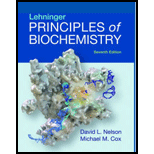
Concept explainers
(a)
To determine: The electron donor in reaction:
(1)
(2)
(3)
Introduction:
(a)
Explanation of Solution
Explanation:
The electron donor is the chemical species in a
In reaction (1)
In reaction (2)
In reaction (3)
(b)
To determine: The electron acceptor in reaction:
(1)
(2)
(3)
Introduction:
Oxidation-reduction reactions are those reactions which involve the change in the oxidation state of participating atoms. These reactions involve the transfer of electrons. The chemical compound from which electron is removed is termed as oxidized and in which electron is added is said to be reduced.
(b)
Explanation of Solution
Explanation:
The electron acceptor is the chemical species which accepts electron from the donor species and becomes oxidized. Since electron acceptor accepts electron they are also known as oxidizing agent.
In reaction (1)
In reaction (2)
In reaction (3)
(c)
To determine: Conjugate pair in reaction:
(1)
(2)
(3)
Introduction:
Oxidation-reduction reactions are those reactions which involve the change in the oxidation state of participating atoms. These reactions involve the transfer of electrons. The chemical compound from which electron is removed is termed as oxidized and in which electron is added is said to be reduced.
(c)
Explanation of Solution
Explanation:
Conjugate pair is the pair of two chemical species in which one is the electron donor and another is the electron acceptor species.
In reaction (1)
In reaction (2)
In reaction (3)
(d)
To determine: The reducing agent in reaction
(1)
(2)
(3)
Introduction:
Oxidation-reduction reactions are those reactions which involve the change in the oxidation state of participating atoms. These reactions involve the transfer of electrons. The chemical compound from which electron is removed is termed as oxidized and in which electron is added is said to be reduced.
(d)
Explanation of Solution
Explanation:
The reducing agents are those chemical species which donate electron and they become oxidizing, thereby reducing it.
In reaction (1)
In reaction (2)
In reaction (3)
(e)
To determine: The oxidizing agent in reaction:
(1)
(2)
(3)
Introduction:
Oxidation-reduction reactions are those reactions which involve the change in the oxidation state of participating atoms. These reactions involve the transfer of electrons. The chemical compound from which electron is removed is termed as oxidized and in which electron is added is said to be reduced.
(e)
Explanation of Solution
Explanation:
The oxidizing agents are those chemical species which accepts electron, thereby themselves becoming reduced and oxidizing the other species.
In reaction (1)
In reaction (2)
In reaction (3)
Want to see more full solutions like this?
Chapter 19 Solutions
Lehninger Principles of Biochemistry
 BiochemistryBiochemistryISBN:9781319114671Author:Lubert Stryer, Jeremy M. Berg, John L. Tymoczko, Gregory J. Gatto Jr.Publisher:W. H. Freeman
BiochemistryBiochemistryISBN:9781319114671Author:Lubert Stryer, Jeremy M. Berg, John L. Tymoczko, Gregory J. Gatto Jr.Publisher:W. H. Freeman Lehninger Principles of BiochemistryBiochemistryISBN:9781464126116Author:David L. Nelson, Michael M. CoxPublisher:W. H. Freeman
Lehninger Principles of BiochemistryBiochemistryISBN:9781464126116Author:David L. Nelson, Michael M. CoxPublisher:W. H. Freeman Fundamentals of Biochemistry: Life at the Molecul...BiochemistryISBN:9781118918401Author:Donald Voet, Judith G. Voet, Charlotte W. PrattPublisher:WILEY
Fundamentals of Biochemistry: Life at the Molecul...BiochemistryISBN:9781118918401Author:Donald Voet, Judith G. Voet, Charlotte W. PrattPublisher:WILEY BiochemistryBiochemistryISBN:9781305961135Author:Mary K. Campbell, Shawn O. Farrell, Owen M. McDougalPublisher:Cengage Learning
BiochemistryBiochemistryISBN:9781305961135Author:Mary K. Campbell, Shawn O. Farrell, Owen M. McDougalPublisher:Cengage Learning BiochemistryBiochemistryISBN:9781305577206Author:Reginald H. Garrett, Charles M. GrishamPublisher:Cengage Learning
BiochemistryBiochemistryISBN:9781305577206Author:Reginald H. Garrett, Charles M. GrishamPublisher:Cengage Learning Fundamentals of General, Organic, and Biological ...BiochemistryISBN:9780134015187Author:John E. McMurry, David S. Ballantine, Carl A. Hoeger, Virginia E. PetersonPublisher:PEARSON
Fundamentals of General, Organic, and Biological ...BiochemistryISBN:9780134015187Author:John E. McMurry, David S. Ballantine, Carl A. Hoeger, Virginia E. PetersonPublisher:PEARSON





